AHS Centenary Exhibition
From the Desert to the World
Newmarket, England – iconic home of the horse - is a fitting place to showcase and celebrate the centenary of the Arab Horse Society. The history of the Arab horse, even in the UK, predates this considerably but the zeal and determination of the early breeders, most notably the Blunts of Crabbet Park, led to the formation of the Arab Horse Society in 1918. Indeed Sir Wilfrid, although quite infirm by this time, was created the first president in acknowledgement of his and Lady Anne’s efforts in bringing the Arab horse to England.
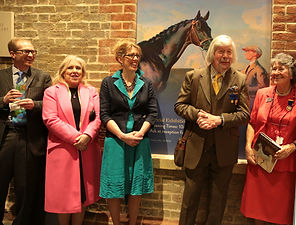
Peter Upton, renowned equine artist, opened the exhibition formally and following this guests were able to view the exhibition in its special gallery upstairs. After months of collation and organisation the exhibition was a fine display of artefacts ranging from beautiful paintings to modern day photographs illuminating the many and varied talents of the Arabian horse.
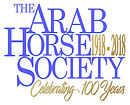

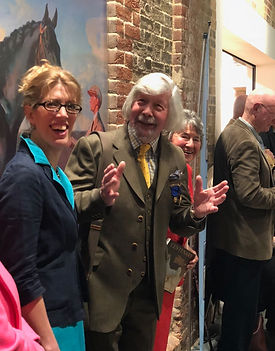
As we entered the gallery we were treated to the sight of a large print of the impressive life size painting of the bay stallion Pharoah ridden by Wilfrid Scawen Blunt, first president of the Arab Horse Society, painted by his wife, Lady Anne Blunt.

Artefacts in the first case included the antique bridle that once belonged to and was worn by the legendary Arab stallion Skowronek. Despite the silk threads fading over the years it was clear to see what a work of art this once was, with shells and intricate stitching adorning the headpiece and magnificent ostrich feathers topping it.
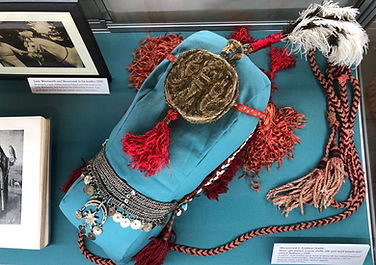

The newest edition of the historic Princess Muna Saddle of Honour took pride of place in the centre of the room. Introduced to demonstrate the strength and depth of Arab breeding through dam lines, echoing the Bedouin way of valuing their breeding, this class was always a highlight of the Arab Horse Society’s annual Summer Show.
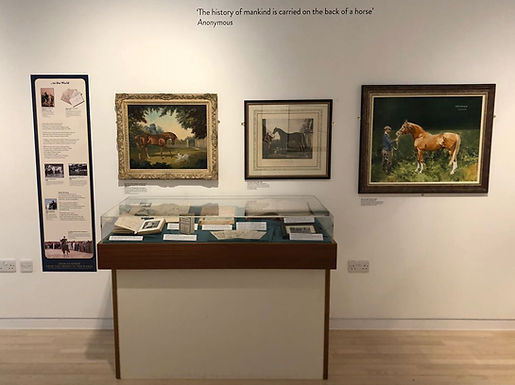

The main feature of the next case was one of the original Crabbet Stud books, the first stud of Arabian horses in the UK. Handwritten by Lady Anne Blunt it lay open at the page listing Kasida, Lady Anne’s favourite journey mare during her travels to Arabia. The well-known painting of Lady Anne riding Kasida by Peter Upton hung nearby in perfect illustration.
Also in the case were several other fabulous artefacts including a beautiful artists sketchbook by MJ Stevens, some original cheques made out to Wilfrid Blunt in payment for Nureddin II and Fantass and some original hand written endurance records from the famous tests of 1920 & 1921.
There were also paintings of Manto by Madeline Selfe and Mesaoud by Peter upton.
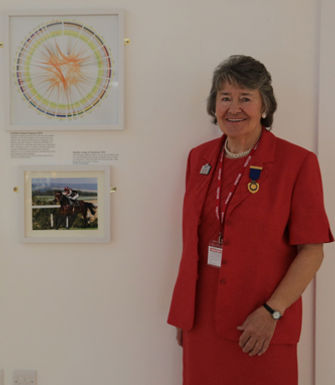
Other notable exhibits included the fascinating genome map of Sambist, the exceptional Tersk bred racing stallion who whilst standing at the Gadebroook Stud became Racing Sire of the Year an unsurpassed ten times.
There were also two Lady Wentworth illuminated pedigrees of Raftan and Indian Gold.
The final wall contained a large set of photographs showing pure and part bred Arab horses competing in many disciplines over recent years, reminding us just how athletic and versatile Arab genes can be.
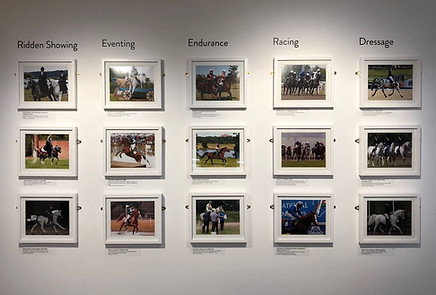

In addition to the exhibition there was also the launch of the Centenary Book of the Arab Horse Society, brainchild of Anne Brown, past president of the Arab Horse Society. Beautifully presented by Medina Publishing the book encompasses all aspects of the Arab Horse Society, past and present, a glimpse at iconic Arab horses and many pictures that bring the centenary and its legacy to life.
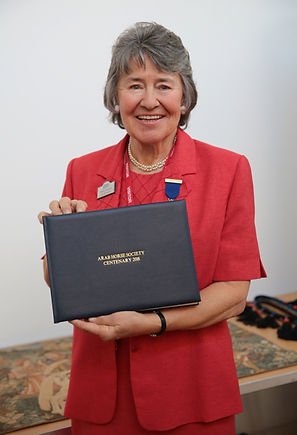
Before the evening came to a close all visitors were asked to sign the Centenary guest book.
All in all this is a comprehensive exhibition depicting the past hundred years of the Arab Horse Society with colour and clarity and is both informative and a feast for the eyes. Running from now until July it is well worth a visit to Newmarket, home of the Thoroughbred horse, descended in part from three Arab stallions –the Byerley Turk, the Godolphin Arabian and the Darley Arabian.
Words by Natalie Tindall
Pictures by Jackie Pringle and Mark Tindall
 |  |  |  |  |  |  |
|---|---|---|---|---|---|---|
 |  |  |
